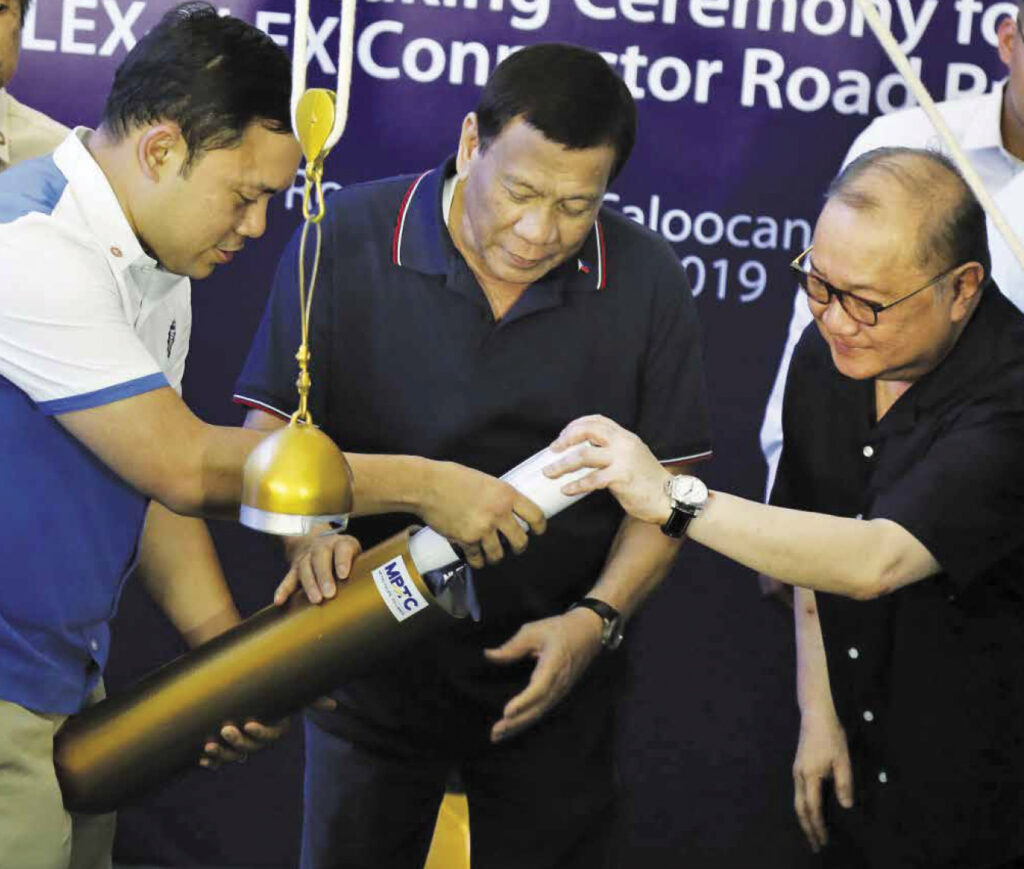By JOSE PAOLO S. DELA CRUZ
In her book, the former chairman of the “Build, Build, Build” program breaks down where P3.4 trillion in government funds went in the last five years — and why it was worth every single penny for the Filipino people.
When “Build, Build, Build,” the country’s most ambitious infrastructure project, first debuted in 2017, it elicited mixed reactions — with both the ayes and the nays flocking to social media to express their thoughts on what was then described as a P9-trillion initiative. Four years, P3.4 trillion and 6.5 million jobs later, the historic undertaking is immortalized in a book.
Not that you need a book, to see what “Build, Build, Build” is all about.
According to the Department of Budget and Management, the Duterte administration allocated and spent P 3.4 trillion on infrastructure development from 2016 to 2019 — a sum that reportedly surpassed the country’s P2.9-trillion infrastructure spending from 1992 to 2016.
This resulted in a good number of infrastructure activities. Among the most notable are the EDSA Decongestion Program, the construction of the Circumferential Road in Boracay, the Cebu-Cordova Link Expressway, and other airports, seaports, bridges and roads in Luzon, Visayas and Mindanao.
Furthermore, these concrete structures are not just seen, but also enjoyed by numerous Filipinos. As for the stories behind what it took to make these things happen? Those, as they say, are for the books.
‘An accurate representation’
“We want an accurate representation of what the program did, rather than a third-party perspective of what happened. And so we released this book as a narration of the day-to-day struggles of pulling off such a program,” shares Anna Mae Lamentillo, the book’s author and former chairman of the “Build, Build, Build,” Committee, which served as the coordinating body between the different government agencies that collaborated for this mission.

Appointed in 2017, Anna Mae herself was in the thick of the battle, until she resigned in October last year to campaign for former Public Works Secretary Mark Villar, who is running for senator. On top of liaising the agencies, this millennial also had to contend with critics and bashers — real people and trolls alike — as she tried to finish Law School and, most importantly, get the job done.
“It was a toxic time. I couldn’t remember a single day when I wasn’t consumed by the problems of ‘Build, Build,Build,’” she now says with a laugh.
But as one would cull from her book, this UP Law graduate says that all those sleepless nights were worth it. “It was a chance to be part of something bigger than myself. I mean, I don’t think the media will remember me in the next few years, but I would know, personally, that I, along with the ‘Build,Build, Build’ team were able to contribute to nation-building,” Anna Mae adds on a more serious note. “From the beginning, it was clear to us: the credit is not ours alone to take.”
As expected, a book on how 5,950 bridges and 29,000 kilometers of roads (among other things) were built would be brimming with data. Night Owl is no exception. And while it does break down these numbers into bite-sized portions all throughout the 342-page read, they’re still quite heady for a single sitting — which to a certain extent, works in the author’s favor. Bite-sized or not, “Build, Build, Build,” built a lot.
More importantly, what gives these numbers heart are the author’s entries on farmers, laborers and ordinary Filipinos who have actually benefitted from these projects. Anna Mae gives a glimpse on the plight of underprivileged, especially of those living outside of the National Capital Region — and how things as simple as a concrete road could change their fortunes.
“In 2020, critics said ‘Hindi nakakain ang imprastraktura. (Infrastructure does not feed people).’ They failed to remember the Kankanaey, Bago, and Ibaloi groups in Barangay Mapita who will have access to markets and basic social services once the Daang Katutubo is complete. They forgot to mention the farmers in Isabela who had to take a 74-kilometer detour before the Pigalo bridge was reconstructed,” she wrote.
For supporters of the Duterte administration, Night Owl will certainly be a keepsake on how the Philippines entered a “golden age” of infrastructure, thanks to the mighty men and women of “Build, Build, Build.” For those who just want a good read — and to know what P 3.4 trillion can do for a country in five years — it’s a good place to start.







